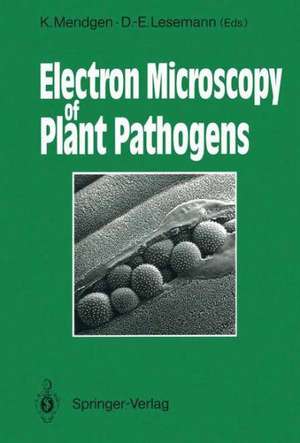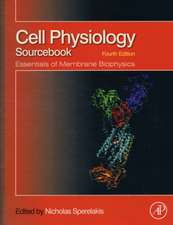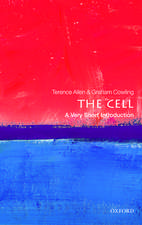Electron Microscopy of Plant Pathogens
Editat de Kurt Mendgen, Dietrich-Eckhardt Lesemannen Limba Engleză Paperback – 27 dec 2011
Preț: 645.79 lei
Preț vechi: 759.76 lei
-15% Nou
Puncte Express: 969
Preț estimativ în valută:
123.58€ • 129.61$ • 102.87£
123.58€ • 129.61$ • 102.87£
Carte tipărită la comandă
Livrare economică 01-15 aprilie
Preluare comenzi: 021 569.72.76
Specificații
ISBN-13: 9783642758201
ISBN-10: 3642758207
Pagini: 356
Ilustrații: XV, 336 p.
Dimensiuni: 170 x 242 x 19 mm
Greutate: 0.57 kg
Ediția:Softcover reprint of the original 1st ed. 1991
Editura: Springer Berlin, Heidelberg
Colecția Springer
Locul publicării:Berlin, Heidelberg, Germany
ISBN-10: 3642758207
Pagini: 356
Ilustrații: XV, 336 p.
Dimensiuni: 170 x 242 x 19 mm
Greutate: 0.57 kg
Ediția:Softcover reprint of the original 1st ed. 1991
Editura: Springer Berlin, Heidelberg
Colecția Springer
Locul publicării:Berlin, Heidelberg, Germany
Public țintă
ResearchCuprins
1 Preservation of Cell Ultrastructure by Freeze-Substitution.- 2 Low-Temperature Scanning Electron Microscopy of Fungi and Fungus-Plant Interactions.- 3 High Pressure Freezing of Rust Infected Plant Leaves.- 4 Cytochemistry of Fungal Surfaces: Carbohydrate Containing Molecules.- 5 Analytical Electron Microscopy in Plant Pathology: X-Ray Microanalysis and Energy Loss Spectroscopy.- 6 The Fine Structure of Virus Particles.- 7 Immunoelectron Microscopy for Virus Identification.- 8 Cytochemistry of Virus-Infected Plant Cells.- 9 Immunolabeling of Viral Antigens in Infected Cells.- 10 Mechanisms of Plant Virus Transmission by Homopteran Insects.- 11 Specific Cytological Alterations in Virus-Infected Plant Cells.- 12 Structure, Cellular Location, and Cytopathology of Viroids.- 13 Immunological Detection and Localization of Mycoplasma-Like Organisms (MLOs) in Plants and Insects by Light and Electron Microscopy.- 14 Interactions Between Pseudomonas and Phaseolus vulgaris.- 15 The Fate of Peripheral Vesicles in Zoospores of Phytophthora cinnamomi During Infection of Plants.- 16 Hemibiotrophy in Colletotrichum lindemuthianum.- 17 Extracellular Materials of Fungal Structures: Their Significance at Prepenetration Stages of Infection.- 18 Rust Haustoria.- 19 Infection by Magnaporthe: An In Vitro Analysis.- 20 Mycorrhizal and Pathogenic Fungi: Do They Share Any Features?.- 21 Haustoria-Like Structures and Hydrophobic Cell Wall Surface Layers in Lichens.- 22 Ultrastructure of Nematode-Plant Interactions.- 23 Infection of Plants by Flagellate Protozoa (Phytomonas SPP., Trypanosomatidae).- 24 Influence of Fungicides on Fungal Fine Structure.










